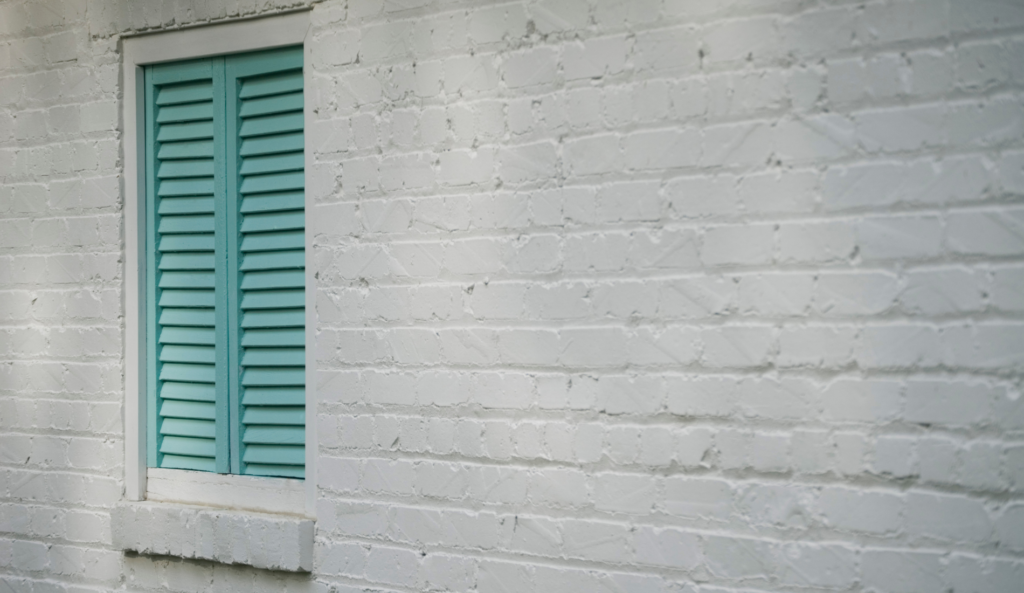Painting exterior brick can be a daunting task, but with the right knowledge and tools, it doesn’t have to be! Whether you want to spruce up your home’s curb appeal or give it a complete makeover, painting exterior brick is one of the most cost-effective ways to do so. In this comprehensive guide we’ll take you through everything from prepping and priming your bricks for paint to choosing the best paint type for lasting results. So grab your brush and let’s get started on transforming that dull looking brick into an eye-catching masterpiece!
Preparing Your Exterior Brick for Painting – What You Need to Know
Before you begin the task of painting your exterior brick, it’s important to properly prepare the surface for a lasting finish. This means not only cleaning and repairing any damage to your bricks, but also choosing the right primer and paint type that will adhere well to masonry surfaces. Taking time to do this step correctly can save you lots of headaches down the road when it comes time for touch-ups or repainting. In this guide we’ll provide all the information you need on how to prep your exterior brick for painting!
Selecting the Right Paint Type for Lasting Results
When it comes to painting exterior brick, selecting the right paint type is key for creating a lasting finish. Different types of paint have different properties that make them better suited for certain surfaces and climates. For example, oil-based paints are known for their durability and resistance to water damage, while acrylic latex paints are more flexible and allow moisture to evaporate from the surface. It’s important to do your research when choosing the best type of paint for your project so you can be sure you’ll get the results you want!
- Oil-based paints provide a durable and waterproof finish
- Acrylic latex paints are flexible and allow moisture to evaporate from the surface
- Epoxy paint is highly resistant to weathering, mildew, and fading
- Elastomeric paint provides superior flexibility over traditional coatings
Prepping and Priming Your Bricks for Painting
Prepping and priming your bricks for painting is an important step in achieving a lasting finish. It’s important to properly clean and repair any damage to the brick surface before beginning the painting process, as well as selecting the right primer and paint type that will adhere best to masonry surfaces. Here are some steps you can take to ensure your exterior brick is prepped and primed for painting.
Prepping and Priming
- Clean Surface: Before applying any paint or primer, it’s essential to thoroughly clean the surface of your exterior brick with a mild detergent solution or trisodium phosphate (TSP). This will remove dirt, dust, and other debris that may interfere with adhesion. Be sure to rinse off any residue when finished.
- Repair Damage: If necessary, repair any cracks or chipped areas on the brick with an appropriate material such as mortar mix or epoxy-based patching compound. Allow plenty of time for these repairs to completely dry before continuing onto the next step.
- Apply Primer: Once all repairs are complete, it’s time to apply a quality masonry primer specifically designed for use on exterior brick surfaces. This will help improve adhesion between the masonry surface and the top coat of paint that will be applied later on. Use a brush or roller to apply an even coat of primer over the entire area you plan on painting, including in between grout lines if applicable.
Getting Ready To Paint
- Choose Paint Type: With your primed surface ready for action, now it’s time to select a paint type that is best suited for your project needs and climate conditions. Oil-based paints provide great durability against water damage while acrylic latex paints allow moisture vapor transfer through their flexible composition – making them ideal for areas prone to humidity changes such as coastal regions. Epoxy paints provide superior weather resistance against fading and mildew while Elastomeric paint offers superior flexibility over traditional coatings – making them perfect choice in climates where temperature fluctuates drastically throughout seasons like those found in higher elevations and mountainous regions..
- Test Paint Color: Before committing fully to a topcoat color of paint, test out various shades by applying small patches across one section of your exteriors bricks – this way you can see what colors would work best before applying one large coat across all surfaces!
Prepping and priming your exterior bricks properly before painting will help ensure a lasting finish that looks great no matter what kind of weather comes its way. Follow these simple steps to achieve the best results.
Best Colors to Complement Your Home’s Exterior Design
- Take into consideration the overall aesthetic of your home’s exterior when deciding on which colors to use. If you have a modern style home, consider vibrant and bold colors such as oranges, yellows, and blues. For a more traditional home, muted tones like beiges, browns, and grays are often best.
- Keep in mind the color of your roof when selecting colors for your home’s exterior paint. Generally speaking, you want to pick colors that will complement the color of your roof; for example, if you have a dark charcoal-gray roof, consider painting with cooler shades like blues or greens instead of warmer colors like oranges or reds.
- Analyze the environment surrounding your home before deciding on an exterior paint color. Factors such as nearby buildings and foliage should be taken into account so that you can choose a color that will stand out in an elegant way while still complimenting its surroundings.
- Consider the amount of sunlight that hits your home’s exterior throughout the day before selecting paint colors; certain lighter hues may begin to fade quickly in direct sunlight while darker shades can absorb too much heat and cause greater energy costs during the summer months.
- Test out different combinations of paint samples before committing to one particular shade; this will give you a better idea as to how each individual hue will look against both its surroundings and other colors before applying one larger coat across all surfaces!
-
Before you start painting, take into account any special features present on your home’s exterior such as doors, shutters or windows. Paint these items in different colors than walls or siding so they stand out from one another and provide visual interest and depth to an otherwise plain surface.
- Remember that neutral colors tend to always work well no matter what type of house design you have; whites, grays and beiges are timeless classics that can add subtle sophistication to any type of architecture!
- Don’t forget about trim work when selecting colors for a house’s exterior! Trim pieces such as window frames provide great opportunity for adding contrast with a different hue than used elsewhere on the property; consider using brighter tones like light blues or pinks against white walls to create an attractive focal point around windows and doors!
Applying the Paint with Precision and Care
Painting exterior brick isn’t just a matter of slapping on some paint and calling it a day. It requires precision, care, and attention to detail in order to achieve the desired results. After all, your home’s exterior is its first impression – you want it to look good! To ensure that your brick looks great once painted, there are certain steps you need to take before applying the actual paint. From prepping and priming surfaces beforehand, to choosing complementary colors afterwards – painting exterior brick can be an involved process but one that will pay off in the end with stunning results!
To Wrap Things Up
Painting the exterior of your home is a great way to give it an updated look, increase its value and make it more inviting. With careful consideration of color palette combinations, roof colors, sunlight exposure and special features such as windows or doors, you can create a stunning finish that stands out from other homes in the neighborhood. Additionally, with precision application techniques like prepping surfaces before painting and adding trim work for contrast – you’ll be sure to have a lasting paint job that looks beautiful no matter what kind of weather comes its way! So take some time today to consider how you could use these tips on improving your home’s exterior design – trust us when we say there are plenty of ways to update yours without breaking the bank!
Need a Painter?
If you want to ensure a flawless finish and expert quality in your painting project, look no further – our team of skilled professionals are here to provide top-notch service and exceed your expectations. Let us help you transform your space with confidence. Contact the Cova Painting team today!


